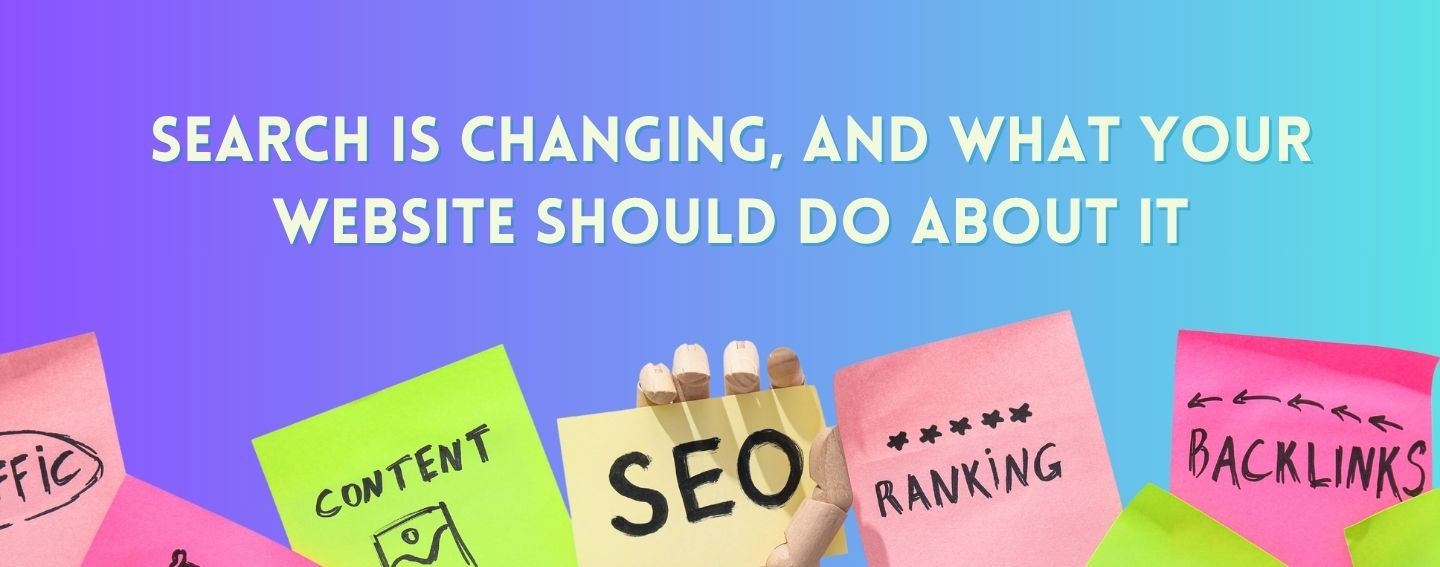Search is changing, and what your website should do about it

Search is no longer just ten blue links. Kiwis and Aussies are asking AI, scrolling social, and seeing answers before they click. Here is what changed, what to publish next, and why speed still pays.
What changed?
-
Social is a major front door to discovery
Social media penetration is high in our region, 79.1 percent of New Zealand’s population and 77.9 percent of Australia’s had active social identities at the start of 2025. People spend meaningful time there and often begin research on platform. DataReportal – Global Digital Insights / DataReportal – Global Digital Insights
-
Shoppers are mixing classic search with social search
IAB Australia’s 2025 Ecommerce Report found search remains the top discovery tool overall, particularly for over 50s, while 59 percent of 18 to 39 year olds say social media is important for product discovery and 75 percent report finding brand information via influencers or creators. The 2024 AU and NZ Ecommerce Report surveyed 1,000 Australians and 1,000 New Zealanders to map these shifts. IAB Australia 2025, IAB AU and NZ 2024 -
AI answers are at massive scale and are changing click behaviour
Google reports AI Overviews have more than 2 billion monthly users, and AI Mode has passed 100 million users in the United States and India. Independent research shows people click fewer links when an AI summary appears, 8 percent of visits clicked a traditional result when a summary was present compared with 15 percent without it. Alphabet Q2 2025 coverage, Pew Research July 2025 -
Zero click is rising, so fewer searches send traffic off Google
SparkToro’s 2024 study estimated that for every 1,000 US Google searches only about 360 clicks go to the open web. More recent analyses show organic click share slipping year over year in early 2025. SparkToro 2024, Search Engine Land 2025 -
Local attitudes to AI are cautious
InternetNZ’s 2024 national survey shows only one in four New Zealanders say they know a lot or a fair amount about AI. Among those who know at least a little, most are more concerned than excited. InternetNZ summary, full report PDF
-
Regulators are watching AI and search
The ACCC’s Digital Platform Services Inquiry final report, released in 2025, flags the rapid rise of generative AI and recommends reforms across competition and consumer protection. ACCC final report
What this means for your content and SEO
Classic SEO still very much matters, but you must optimise for three surfaces, your website, Google’s AI features, and AI answer engines such as ChatGPT and Perplexity.
-
Write for answers, not only rankings
Lead with a short, plain English summary, then add a scannable checklist. Cite high quality sources, especially local data, for example IAB NZ or AU, InternetNZ, ABS or MBIE. This structure makes your content easier for AI systems to quote and for people to trust. IAB Australia on social search
-
Use structured data properly
Add JSON‑LD for Organisation, Article, FAQPage and Product where relevant. Validate with Google’s Rich Results Test. Google’s documentation confirms there is no single page experience ranking system, but its core ranking systems reward helpful content and good experience signals. Page experience guidance, structured data docs
-
Plan for lower CTR on AI heavy queries
Expect impressions to rise and clicks to fall where AI summaries appear. Adjust KPIs to include assisted conversions and brand lift. See BrightEdge’s analysis and news coverage for the pattern, impressions up about 49 percent and CTR down about 30 percent year over year. BrightEdge, Search Engine Land
-
Meet people where they actually search
Repurpose key articles into native social formats, then link back to your canonical page. The regional data above shows social discovery is strong, particularly for under 40s. IAB Australia 2025
How to earn citations and recommendations from AI
-
Be easy to quote
Use concise definitions, numbered steps, clear headings, and place a short answer at the top. Perplexity, in particular, emphasises clickable citations in its help and product materials. Getting started with Perplexity, How Perplexity works
-
Show real expertise
Add author bios, About pages, contact details, and transparent sourcing. These help both users and AI systems assess credibility. Align with Google’s guidance on helpful content and page experience. Google page experience
-
Decide your AI crawler policy
If you want citations in Perplexity, allow PerplexityBot in robots.txt. If you prefer to opt out, follow each bot’s documentation. Robots.txt is voluntary, so combine with other controls if needed. Perplexity crawlers, OpenAI crawlers, and context on crawler compliance from Wired
Why speed and Core Web Vitals still matter
-
What to aim for
Largest Contentful Paint, 2.5 seconds or faster. Interaction to Next Paint, under 200 milliseconds. Cumulative Layout Shift, under 0.1. INP replaced FID as a Core Web Vital in March 2024. Search Central on INP, Core Web Vitals docs
-
How Google treats speed and experience
Page experience is not a single ranking system. Google’s core ranking systems consider multiple signals that align with good experience, alongside relevance. Use PageSpeed Insights as a diagnostic, and track field data in Search Console. Page experience guidance, Core Web Vitals report
-
Speed improves business outcomes
Vodafone’s controlled test showed an 8 percent sales lift from a 31 percent LCP improvement, with other funnel metrics improving as well. Vodafone case study
At Fuel Design we guarantee 80 percent plus on Google PageSpeed Insights as a practical benchmark. The score itself is not a direct ranking factor, but it usually correlates with passing Core Web Vitals, which supports visibility and lifts conversion from every paid or social click. Google guidance
What to publish next, with ANZ audiences in mind
-
Answer‑first explainers for your priority questions, two to four sentence summary at the top, a short checklist, clear
verdicts, and citations to high quality local sources where possible. IAB Australia on
social search
-
Comparison and decision pages that explain trade offs plainly, include local specifics such as shipping times, GST
differences, and NZ or AU consumer protections, with links to the primary sources. IAB
Australia
-
Structured data and trust signals on your top 20 pages, Organisation, Article, FAQPage, Product where appropriate,
validated with the Rich Results Test. Keep authors,
dates, and references up to date. Structured data
docs
-
Decide your AI crawler settings. Allow PerplexityBot if you want more chance of citations in Perplexity. If you need to
restrict, use robots.txt and, if required, IP and firewall controls. Perplexity docs, OpenAI
docs
- Monitor the new baselines. Expect more impressions and fewer clicks where AI summaries appear, so measure assisted conversions, brand searches, and post view traffic from social. Search Engine Land on CTR shift, SparkToro on zero click strategy.



